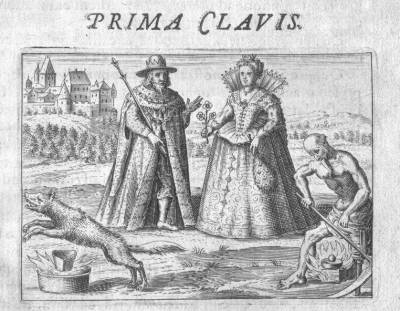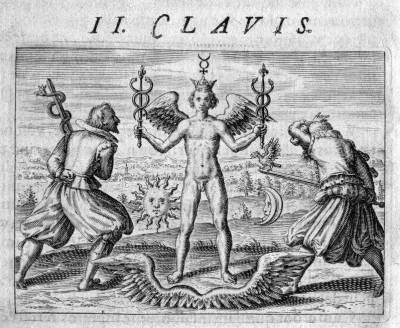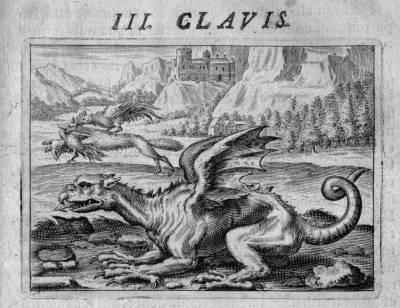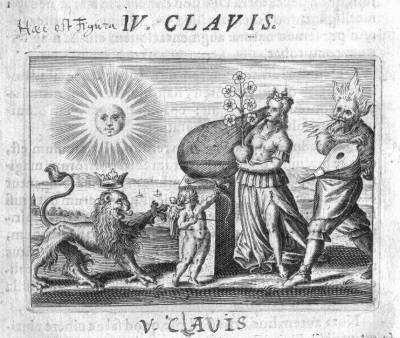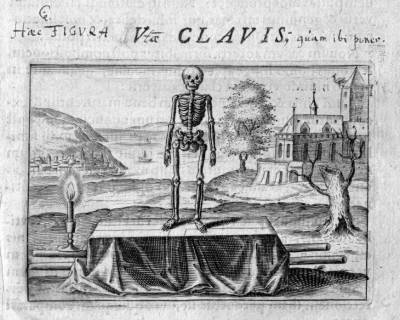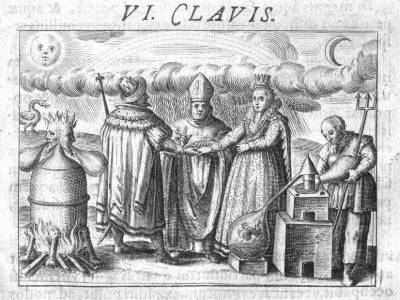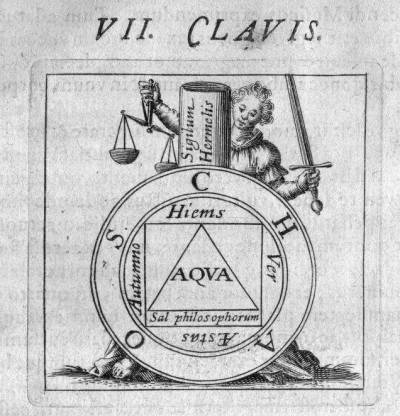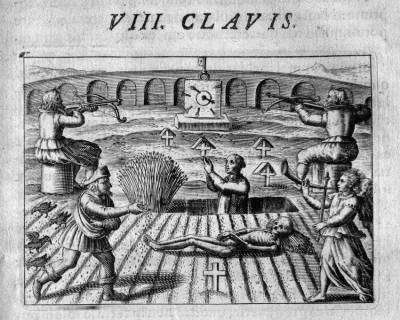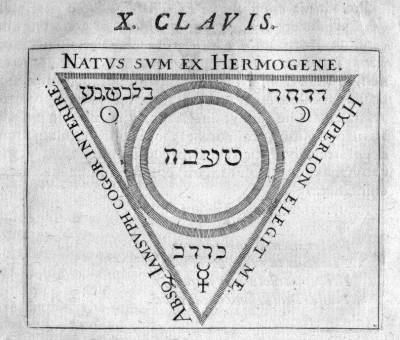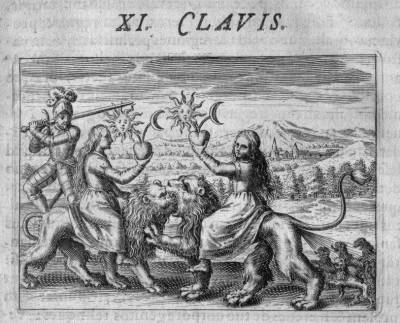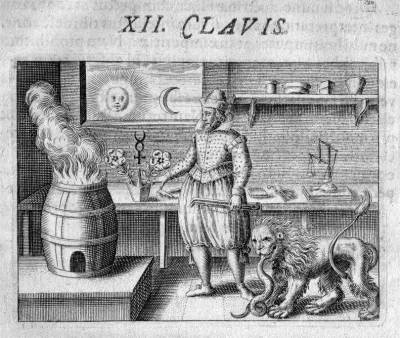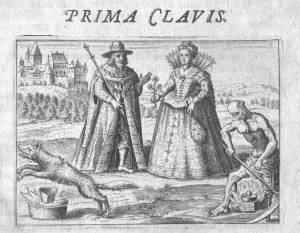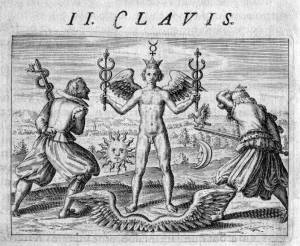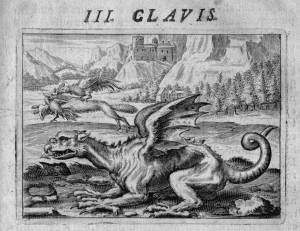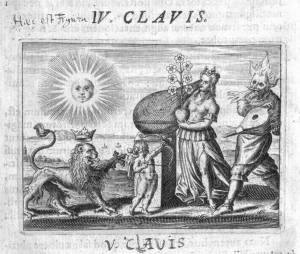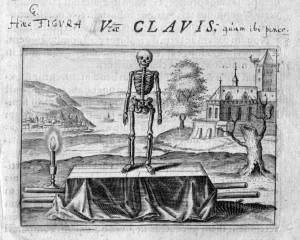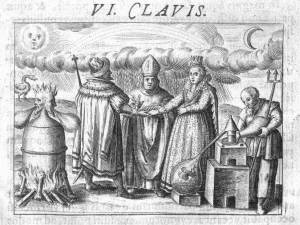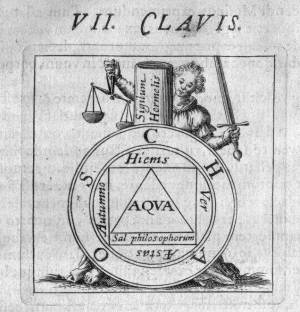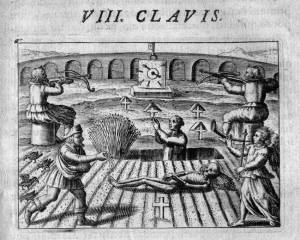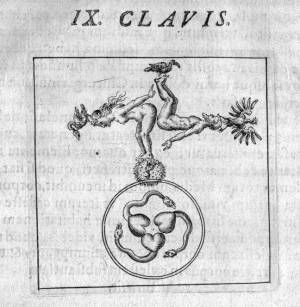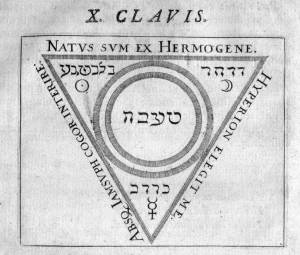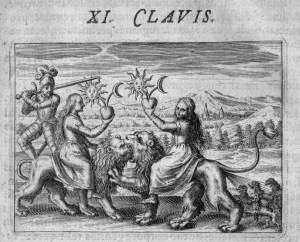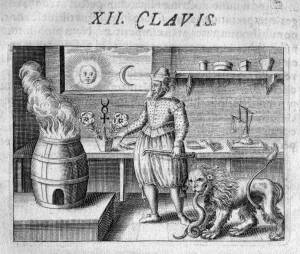The Twelve Keys of Basil Valentine
The Twelve Keys of Basil Valentine
cf Secretioris Naturae , but its in Latin.
cf p76 of Atalanta Fugiens where the wolf devours the king.
cf p70 of Secretioris Naturae Secretorum Scrutinium Chymicum
I'm not sure what this emblem is showing exactly. There is a motion in the picture, a rotation and thus a repetition almost. There is also the theme - 'as above so below': The three snakes emerging from the three hearts in the double layered circle below could be the tria materia, sulphur, mercury & salt. The 'rotation' of the masculine feminine above in almost a celestial formation seems to show different stages - the different birds on their heads and at their feet. The eagle on the mans head, the black crow at his feet. The phoenix on the woman's feet, the pelican on her head. May not be a pelican I guess, but a bird with a long neck…even a snakes head perhaps? The pelican is mentioned in the Third Key. It could perhaps also be a swan, as used in the images of the Commentariorum Alchymiae, by Libavius (and elsewhere I'm sure); a comment is made in Prelude to Chemistry top of page 219. The text in the Twelve Keys says, 'The King shares his royal dignity with noble Venus, and appears in splendid state, surrounded by all the dignitaries of his court.' …I wonder if these birds are the dignitaries? …either way, it seems celestial somehow. The Saturnian man, the 'least useful in the Magistery' (as it points out in the text) = us, the salt, is symbolised naked as the male and female, but not joined, rather, in rotation with one another. At each stage (perhaps 3 ? …as highlighted in emblem one, the putrefaction has to be done 3 times.) the effort and outcome goes through the different changes as shown by the birds. ???
